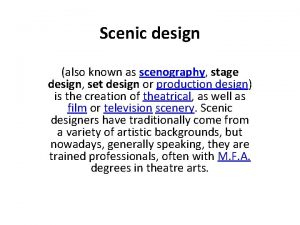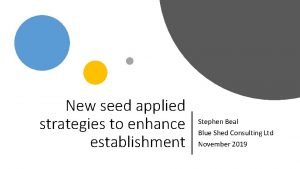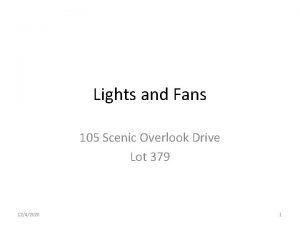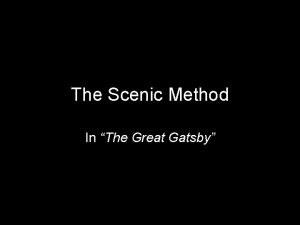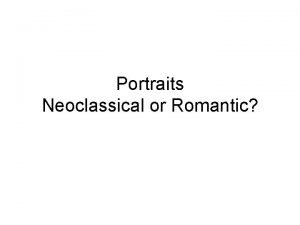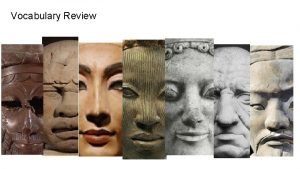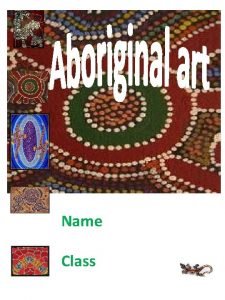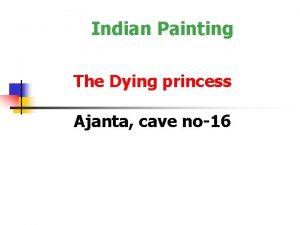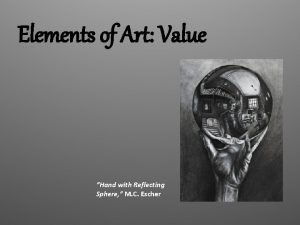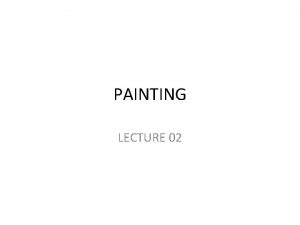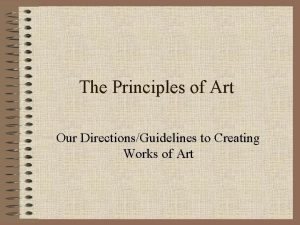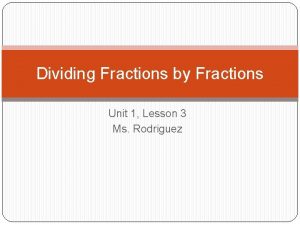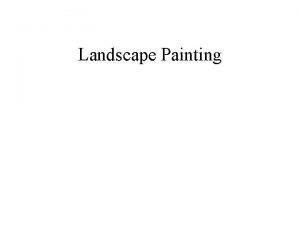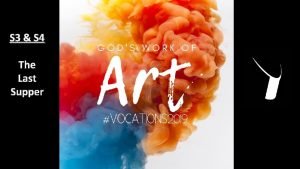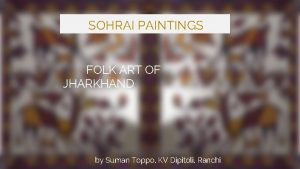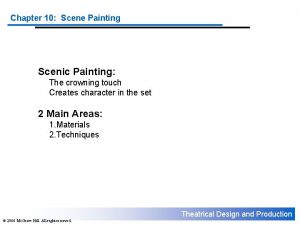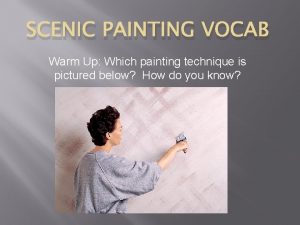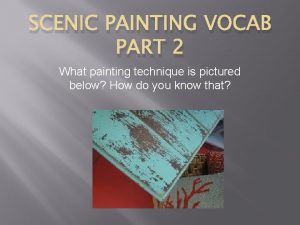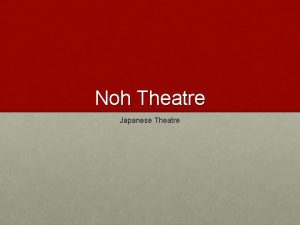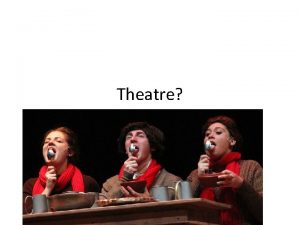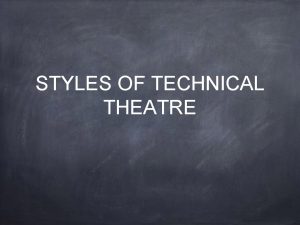Technical theatre SCENIC PAINTING SCENIC PAINTING Purpose of





































- Slides: 37

Technical theatre SCENIC PAINTING

SCENIC PAINTING Purpose of Scenic Painting: �To make a set look like anything – real or imaginary �Provides most opportunity for freedom and creativity � MUSHROOM FORREST � http: //youtu. be/sj. LMWVRc. C 8 c

Oklahoma!




PAINT SAFETY 1. MAINTAIN A CLEAN AND ORGANIZED WORKING ENVIRONMENT. 2. KEEP SINK CLEAR OF ANY PAINT PARTICLES, RAGS OR BRUSHES. 3. CLEAN BRUSHES , SPONGES AND ROLLERS WITH WARM WATER & SOAP. RINSE THOROUGHLY AND HANG TO DRY. 4. SOME PAINTS ARE FLAMMABLE. KEEP PAINT STORED IN CABINET. 5. NEVER USE A SCREW DRIVER TO OPEN A PAINT LID. 6. REPLACE PAINT LIDS BY USING A RUBBER MALLET.

PAINT SAFETY 7. USE THE RIGHT BRUSH FOR THE RIGHT JOB. 8. MIX AND PREPARE PAINT IN THE SHOP FIRST, THEN TRANSPORT. 9. WHEN SPRAY PAINTING, GO OUTSIDE. 10. REPORT ANY DAMP OR WET CONDITIONS IMMEDIATELY. 11. KNOW THE LOCATION OF THE CLOSEST FIRE EXTINGUISHER. 12. USE COMMON SENSE. BE AWARE OF YOUR SURROUNDINGS.

SCENIC PAINT WATER-BASED LATEX PAINT � Pigment: color agent � Binder: adhering agent LEVELS OF REFLECTIVITY �Flat � Egg Shell � Satin � Semi-Gloss � High Gloss

PAINT APPLICATORS BRUSHES � Use the right one for the job � Never dip the brush more than 1/2 way up the bristles � Shown: ½”-4”

PAINT APPLICATORS ROLLERS � Used for covering a lot of surface area quickly � 8” inch roller is standard; thinner are available � Thickness of nap: 1/4”, 3/8”, 1/2", 3/4”

PAINT APPLICATORS SPONGE � Natural - used for texture, stenciling � Artificial - cut into a shapes, used for stenciling and texturing

PAINTING TOOLS �chalk line �sprayer �spray paint �extension handles �straight edge �drop cloth �templates �muffin or pie tins to mix paint

PAINT CLEAN UP �hand or dish soap �warm to hot water �massage bristles, away from base �water should run clear �stand covers on end �hang brushes to dry IS IT CLEAN? TRY THE SUCK TEST!!!!

STEPS IN PAINTING 1. PRIME COAT �Provides uniform base for the rest of the paint job �Fills in pores and holes in canvas 2. BASE COAT �color of elevation �foundation used for any texturing 3. TEXTURE �Applied on top of the base coat to provide visual interest, variety, and depth to scenery

TEXTURE: SPATTERING Applying small drops of paint to a surface � Effect => to show age of paint, to cover irregular surfaces, to alter a hue � How => dip tips of brush in paint, stand 3 -5 feet back, slap the FERRULE (metal part of the brush) against heal of hand � Tip = > Use a cross-hatch pattern to create a natural spatter

TEXTURE: SCUMBLING Blending of several hues � Effect => creates a multihued texture; rough or smooth � How => blending of different hues together while the paint is still wet � circular, swirling, cross-hatch, straight, curved � - high vs. low contrast � Tip = > 1. Use separate brushes for each color hue 2. work rapidly while paint is still wet

TEXTURE: STIPPLING Applying a heavier texture to a surface � Effect => gives a heavier texture look � How => dip the end of the applicator into the paint and touch to surface � Brush sponge feather duster edge of burlap end of rope � Tip = > 1. Change the position of the applicator to avoid making an obvious pattern 2. Change the pressure when touching the surface

TEXTURE: FLOGGING/VEINING Applying a very large amount of paint to a surface � Effect => to give a random, heavy look � How => attach strips of canvas to a piece of 2 x 2 lumber that is 2 – 3 feet long. Fling the flogger until it hits the surface. Continue in random positions. � Tip = > make sure set pieces and others are out of the way – this is messy

TEXTURE: DRY BRUSHING Painting with a brush that has little paint � Effect => used to create wood grains and can be used on things other than scenery � How => Dip tip of brush in paint and scrape excess paint on lip of bucket. � Lightly draw brush across surface. � Tip = > 1. If hue and value is close to base coat- result is smooth 2. If hue and value is greater that of base coat – result is rough

TEXTURE: LINING Using straight lines of varying widths � Effect => creates the appearance of depth to show a source of light on the object � How => use highlight and shadowing lines with a lining brush � Tip = > use a straight edge (bricks - paneling on doors)

TEXTURE: STENCILING Large, cut out patterns � Effect => creates repetitive, intricate designs, as with wallpaper � How => Cut a stencil from stencil paper, card stock paper, or poster board and cover with shellac, lacquer, or spray varnish to waterproof stencil (or go buy one). Use a sponge, sprayer or stencil brush to apply paint to surface. � Tip = > 1. don’t apply too much paint in that it seeps under the stencil 2. spraying works best because it is more gentle on the stencil 3. clean the stencil to remove excess paint

TEXTURE: SPONGING Using a synthetic or sea sponge to to paint, dap or stamp with; used for faux finishes or in conjunction with stenciling � Effect => creating a random appearance (sea sponge) or rhythmic pattern (synthetic) � How => First wet the sponge then dab in paint and wipe off access. � Then working from the middle lightly blot the surface of set piece � Tip = > 1. careful not to smear 2. go up and down movements 3. light on dark = brighter 4. try multiple colors by layering

TEXTURE: RAG ROLLING Rolling a rag on a surface to create random lines � Effect => create a marble effect � How => use a rag and dip into the bucket of paint. � Ring out excess paint and roll up loosely. Roll the rag around on the surface, changing directions often. � Tip = > 1. wear gloves 2. start out lightly – you can always add more

TEXTURE: OTHER � STONES � FEATHER DUSTER

TEXTURE: BRICKS Realistic or Stylized bricks � How => use the side of a rectangular sponge. Dip into the paint and wipe off the excess paint on the lip of the bucket. � Gently set the sponge on the surface. Continue to set the sponge � down in a row, leaving about 1/4” between each “brick”. Offset each row that follows. Follow up by lining the bricks with highlight and shadow. � Tip => Be sure to base the surface with a color that would naturally work as the grout color. This will show between the bricks.

SCENIC DESIGN PROJECT PT. 3 SCENIC PAINTING PRODUCTION SCENIC PAINTING APPLICATION � Scenic painting � Take the scale model Research � Painter’s Color Elevation stock scenery piece and paint it to reflect the color elevation EXACTLY. � Prime, Base and Texture the piece.

1949 KITCHEN FLOOR RESEARCH

DEATH OF A SALESMAN

COLOR SCHEMES Primary colors: � Red, Yellow, Blue Seconday Colors: � Red + Yellow= Orange � Red + Blue=Violet � Yellow + Blue=Green

18 th Century Early American Victorian

FRONT COLOR ELEVATION

PAINTER’S ELEVATION A PAINTER’S ELEVATION is a copy of the front elevation which has been rendered to indicate the color and painting techniques which are to be applied to the final set.

PAINTER’S ELEVATION

PAINTER’S ELEVATION

PAINTER’S ELEVATION

Scenic Painting Examples Painting fake brick and plaster walls � http: //youtu. be/eid. KQ 6 ELClk Painting the scenic cloth for The Royal Opera's Robert le diable � A scenic artist � http: //youtu. be/Cfy. EXX 6 Ns. Mk http: //youtu. be/gnh 8 -BQLP 1 c
 Scenic painting brushes
Scenic painting brushes Technical theater vocabulary
Technical theater vocabulary Scenic view javafx
Scenic view javafx Scenic designer definition
Scenic designer definition Scenic gold seed treatment
Scenic gold seed treatment John graves scenic riverway
John graves scenic riverway Scenic caves tickets online
Scenic caves tickets online 105 scenic drive
105 scenic drive Thickish figure of a woman
Thickish figure of a woman Lower delaware national wild and scenic river
Lower delaware national wild and scenic river Scenic serene sublime
Scenic serene sublime Purpose of technical writing
Purpose of technical writing Give me a sentence
Give me a sentence Specific purpose statements
Specific purpose statements Southern gothic characteristics
Southern gothic characteristics Non objective painting
Non objective painting Neoclassicism portraits
Neoclassicism portraits Static electricity painting
Static electricity painting ブロードウェイブギウギ
ブロードウェイブギウギ Marian anderson at lincoln memorial
Marian anderson at lincoln memorial Who is this?
Who is this? Tom sawyer lived with his aunt
Tom sawyer lived with his aunt Name: class:
Name: class: Thangka painting of arunachal pradesh
Thangka painting of arunachal pradesh Norval morrisseau observations of the astral world
Norval morrisseau observations of the astral world Dying princess ajanta caves
Dying princess ajanta caves Which painting
Which painting Hand with reflecting sphere
Hand with reflecting sphere What is painting
What is painting Cow skull painting
Cow skull painting Static electricity photocopier
Static electricity photocopier Diana is painting statues. she has
Diana is painting statues. she has Memory is an abstract painting
Memory is an abstract painting André derain mountains at collioure
André derain mountains at collioure Last supper painting judas
Last supper painting judas Macbeth act 3 quiz
Macbeth act 3 quiz Ustad allah bux paintings
Ustad allah bux paintings Sohrai painting of jharkhand
Sohrai painting of jharkhand



